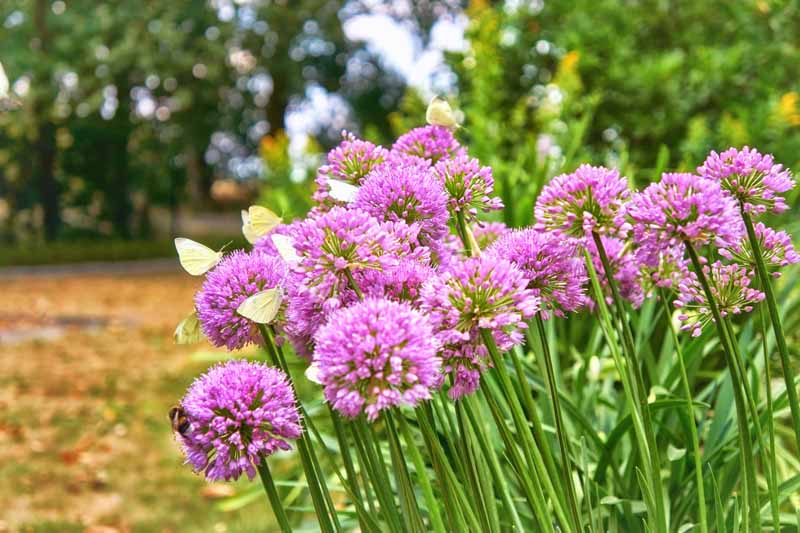Agapanthus Varieties: Picking the Best for Your Landscape
Agapanthus Varieties: Picking the Best for Your Landscape
Blog Article
Mastering the Art of Agapanthus Care: Necessary Actions for Healthy And Balanced Growth and Vivid Blossoms
In the world of horticulture, the growing of agapanthus stands as a rewarding undertaking for those that seek to nurture these elegant flowering plants. From choosing the appropriate variety to grasping trimming methods, the journey towards growing growing agapanthus plants is diverse and holds the essential to opening the complete possibility of these botanical treasures.
:strip_icc()/agapanthus-africanus-b959396b-5696f86e059c46f299d1834ba687c6eb.jpg)
Picking the Right Agapanthus Variety

When choosing the right Agapanthus variety for your yard, take into consideration factors such as environment suitability, bloom shade, and development behavior. In addition, consider the environment in your area to guarantee the Agapanthus selection you choose can flourish in your specific problems. Comprehending the growth practice of various Agapanthus ranges is important for proper placement within your yard.
Ideal Growing Problems
Considering the optimum environmental needs is important for successful Agapanthus farming. Agapanthus plants are sensitive to cool temperatures and should be secured from frost during winter season months.
To ensure healthy and balanced growth and vibrant flowers, plant Agapanthus bulbs at a depth of concerning 2-4 inches and area them 8-12 inches apart. Including raw material, such as compost, to the soil can boost drain and fertility, advertising robust origin advancement. Mulching around the base of the plants helps keep moisture and reduces weed growth. Regular watering is essential, especially throughout the growing period, to maintain the soil consistently wet but not waterlogged.
Watering and Feeding Tips
Keeping correct moisture levels and offering vital nutrients are key elements in the treatment program for Agapanthus plants. When it comes to watering Agapanthus, it is essential to strike a balance. These plants favor constantly moist dirt yet are at risk to root rot if overwatered.
Feeding Agapanthus is vital for promoting healthy and balanced development and respected flowers. Apply a well balanced plant food, such as a 10-10-10 formula, in the early springtime as new growth emerges. Repeat this application every 6-8 weeks throughout the expanding period. Prevent too much fertilization, as it can result in rich vegetation at the expenditure of flowers. Constantly comply with the manufacturer's guidelines for correct dilution and application techniques. By following these watering and fertilizing pointers, you can ensure your Agapanthus plants flourish and produce lively, resilient you can check here blossoms.
Trimming Strategies for Agapanthus
Trimming Agapanthus plants at the proper times and with proper methods is vital for preserving their health and wellness and advertising ideal development and flowering. The optimal time to prune Agapanthus is in late winter season or very early springtime before new growth emerges. Begin by removing any dead or yellowing leaves near the base of the plant. Cut them as short as possible without damaging the arising shoots.
Deadheading invested Recommended Reading flowers can likewise reroute the plant's energy right into producing even more blooms rather than setting seeds. visit this site If you desire to collect seeds for proliferation, leave some blossoms to completely dry and fully grown on the plant.
Bear in mind to use clean, sharp devices to make exact cuts and lower the risk of introducing conditions. Agapanthus. Regular trimming will certainly help keep your Agapanthus looking cool and healthy while making certain an abundant screen of beautiful flowers
Dealing With Common Bugs and Conditions
After making sure proper pruning strategies for Agapanthus, it is essential to address common pests and diseases that can influence the health and vigor of these plants. One usual parasite that impacts Agapanthus is the Agapanthus gall midge.
An additional usual problem is fungal leaf spot, which offers as dark sores on the fallen leaves. To prevent fungal conditions, guarantee excellent air flow around the plants, prevent overhead watering, and get rid of any type of contaminated leaves promptly. In addition, Agapanthus plants can experience origin rot if they are grown in poorly draining pipes soil. To stop this, plant Agapanthus in well-draining soil and stay clear of overwatering. By being cautious and taking punctual action versus bugs and conditions, you can aid your Agapanthus plants prosper and create dynamic blossoms.

Final Thought
In conclusion, grasping the art of agapanthus care entails choosing the appropriate variety, providing suitable growing problems, appropriate watering and fertilizing, ideal pruning strategies, and addressing common parasites and conditions. By complying with these crucial steps, you can make certain healthy and balanced development and dynamic blooms for your agapanthus plants. Bear in mind to consistently check and preserve your plants to advertise their general well-being and durability.
To make certain healthy and balanced growth and dynamic blossoms, plant Agapanthus light bulbs at a deepness of regarding 2-4 inches and space them 8-12 inches apart. By following these watering and feeding ideas, you can guarantee your Agapanthus plants prosper and create vibrant, lasting blossoms.
One typical bug that influences Agapanthus is the Agapanthus gall midge. Additionally, Agapanthus plants can suffer from root rot if they are grown in improperly draining dirt. By complying with these vital actions, you can make sure healthy growth and vivid blooms for your agapanthus plants.
Report this page